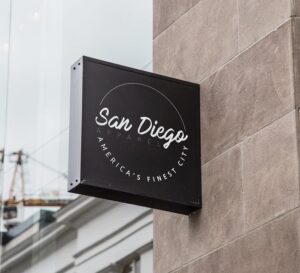“The Top 15 Signs Your Ice Maker Needs Repair and How to Fix Them”
Are you tired of constantly running out of ice or dealing with strange tastes in your drinks? It’s as if your ice maker has developed a mind of its own, causing you frustration.
But fret not! This article will serve as your ice maker repair guide, highlighting the top 15 signs that indicate your ice maker is in need of fixing.
From leaks to jammed mechanisms, we’ll provide practical solutions to restore your ice maker’s functionality.
Get prepared to overcome those ice-maker troubles with confidence!
Key Takeaways
- Leaks and water valve issues can indicate the need for repair and should be addressed promptly to prevent further damage.
- Control arm and ejector assembly malfunctions can disrupt ice production and may require professional replacement.
- Frozen water lines can hinder ice production and should be checked and straightened if necessary.
- Regularly replacing old water filters and performing routine maintenance tasks can help maintain the functionality and lifespan of the ice maker.
#1 Strange Noises
If your ice maker is making strange noises, it’s important to address the issue promptly to prevent further damage and ensure proper functionality. Strange noises coming from your ice maker can indicate underlying problems with the motor, water valve, ice maker mechanism, fan, or loose components.
Excessive noise or irregular sounds may suggest a problem with the ice maker motor or water valve and may require professional repair. Additionally, if the ice cubes hitting the bin produce grinding or scraping sounds, there may be an issue with the ice maker mechanism that needs to be addressed.
It’s crucial to tighten any loose connections or parts near the ice maker and to inspect for any visibly damaged components. If you’re unsure about the source of the strange noises or if they persist, it’s recommended to contact a professional appliance repair service for further inspection and repair.
#2 Slow Ice Production
If you’re experiencing slow ice production from your ice maker, there are several possible causes and solutions to consider.
Low freezer temperature: Check the freezer temperature and ensure it’s set to the recommended temperature for ice production, typically around 0°F or -18°C. Adjust the temperature if necessary.
Insufficient water supply: Examine the water line connection to the refrigerator and ensure it’s properly connected, not kinked, and not obstructed. Check the water filter and replace if clogged.
Ice level sensor or arm obstruction: Make sure the ice bin isn’t overfilled or obstructing the ice level sensor. Clear any ice or debris that may be blocking the ice level arm.
If these troubleshooting steps don’t resolve the issue, consult the refrigerator’s user manual or contact a professional appliance repair service for further assistance.
#3 Small or Misshapen Ice Cubes
Check the water supply pressure and the condition of the water filter to determine if they’re causing small or misshapen ice cubes.
Low water pressure can affect ice cube formation, so ensure that the water supply valve is fully open and the pressure is within the recommended range.
If your refrigerator has a water filter, check if it’s clogged or overdue for replacement. A clogged filter can restrict water flow to the ice maker, resulting in smaller or misshapen ice cubes.
Additionally, inspect the water inlet valve, as a malfunctioning or partially blocked valve can impact water flow.
#4 Leaking Water
Are you experiencing water leakage from your refrigerator’s ice maker and wondering what could be causing this issue? Here are some possible causes and solutions to fix the problem:
- Incorrect water line connection:
- Check the water line for any loose connections or damage.
- Ensure it’s properly connected and not kinked.
- Tighten any loose connections and replace damaged parts if necessary.
- Frozen or blocked water inlet tube:
- Inspect the water inlet tube for ice buildup or blockage.
- Thaw the tube using a hairdryer on a low heat setting.
- Consult the refrigerator’s user manual for specific defrosting instructions.
- Cracked or damaged water supply line:
- Examine the water supply line for cracks or damage.
- Replace the water supply line with a new one if needed.
If these troubleshooting steps don’t resolve the issue, consult the refrigerator’s user manual or contact a professional appliance repair service for further assistance in repairing the water leakage from your ice maker.
#5 No Ice Production
When your ice maker is not producing any ice, it’s time to troubleshoot the issue and find a solution. Here are some possible causes and solutions for the lack of ice production in your ice maker:
| Possible Cause | Solution |
|---|---|
| Power supply issues | – Check if the refrigerator is properly connected to a power source and receiving power. <br>- Verify that the ice maker switch or control is in the ‘ON’ position. |
| Water supply problems | – Check the water line connection and ensure it is properly connected and not obstructed. <br>- Verify that the water supply valve is fully open. |
| Freezer temperature | – Check the freezer temperature setting and ensure it is set to the recommended temperature for ice production. |
| Ice maker components | – Ensure that the ice maker arm or sensor is in the correct position and not obstructed. <br>- Check the ice mold and water inlet valve for any blockages or malfunctions. |
| Overfilled or jammed ice bin | – Make sure the ice bin is not overfilled and clear any ice or debris that may be causing a blockage. |
| Malfunctioning ice maker | – If none of the above solutions work, the ice maker may require professional repair or replacement. |
If you have followed these troubleshooting steps and the ice maker still does not produce ice, consult the refrigerator’s user manual or contact a professional appliance repair service for further assistance.
#6 Ice Maker Overflows
If your ice maker is overflowing and producing an excessive amount of ice, you may be dealing with a few potential causes and solutions:
Incorrect ice maker settings: Check the settings of your ice maker and adjust the production level to prevent overflowing.
Malfunctioning ice level sensor or arm: Inspect the sensor or arm for any obstructions or damage and consider repairing or replacing it.
Defective water inlet valve: Consult a professional technician to inspect and replace the water inlet valve if necessary.
These issues can lead to the overproduction of ice and cause overflow in your ice maker.
By addressing these potential causes, you can prevent further damage and ensure the proper functioning of your appliance.
If the problem persists, it’s recommended to consult the refrigerator’s user manual or contact a professional appliance repair service for assistance.
#7 Ice Tastes or Smells Bad
If you notice that your ice tastes or smells bad, there are a few potential causes and solutions to address this issue with your ice maker.
First, check the water supply used by the ice maker to ensure it’s clean and free from contaminants. Consider installing a water filter or using filtered water to supply the ice maker.
Stale ice can also contribute to bad taste or odor, so try using fresh ice cubes and avoid storing them for too long.
Cleanliness is important, so make sure to clean the ice maker and its components, such as the ice mold, ice bin, and water lines.
Additionally, check the cleanliness of the freezer compartment and avoid placing strongly flavored or odorous items near the ice maker.
If the issue persists, consult the refrigerator’s user manual or contact a professional appliance repair service for further assistance.
#8 Ice Maker Freezes Up
To address the issue of your ice maker freezing up, check the temperature settings of your freezer. If the freezer temperature is set too low, it can cause excessive freezing, leading to ice buildup in the ice maker. Adjust the temperature to the recommended level, typically around 0°F or -18°C, to prevent the ice maker from freezing up.
Here are three potential causes and solutions to consider:
Water inlet valve: Ensure that the water inlet valve is functioning correctly. If the valve doesn’t close properly, it can lead to continuous water flow into the ice maker, causing freezing issues. Consider inspecting the valve for any blockages or malfunctions and consult a professional technician if needed.
Ice maker mold or tray: Check the ice maker mold or tray for any obstructions or misalignments. If ice cubes or other debris block the mold or tray, it can hinder the proper functioning of the ice maker and cause freezing. Clean the mold or tray and ensure that it’s correctly positioned.
Insufficient airflow: Proper airflow is crucial for maintaining consistent temperatures in the freezer and preventing excessive freezing. Check for any obstructions or blocked vents in the freezer compartment that may be restricting airflow. Rearrange items in the freezer to allow for better airflow around the ice maker.
If these troubleshooting steps don’t resolve the issue, consult the refrigerator’s user manual for model-specific guidelines or contact a professional appliance repair service for further assistance.
#9 Ice Maker Won’t Turn On
To address the issue of your ice maker not turning on, ensure that the power supply to the refrigerator is properly connected and functioning. Check the power cord for any damage or loose connections, and try plugging another appliance into the same outlet to verify if it is providing power. If the outlet is not functioning, try using a different outlet or consult an electrician to resolve the electrical issue. Additionally, verify that the ice maker switch or control is turned on. Some ice makers have an arm or sensor that detects the ice level in the bin, so make sure it is properly positioned and functioning. If these steps do not resolve the issue, it is recommended to consult the refrigerator’s user manual or contact a professional technician to diagnose and repair any faulty components.
| Possible Causes | Solutions |
|---|---|
| Power connection issues | Check the power cord and outlet for damage or loose connections. Try using a different outlet or consult an electrician. |
| Ice maker switch or control off | Turn on the ice maker switch or control. |
| Water supply issues | Ensure the water supply to the refrigerator is connected and turned on. Check for kinks, blockages, or leaks in the water line. |
| Malfunctioning components | Consult the user manual or contact a professional technician for diagnosis and repair. |
| Ice maker reset needed | Follow the ice maker’s reset procedure as outlined in the user manual. |
| Contact the manufacturer or professional repair service | Seek further assistance if troubleshooting steps do not resolve the issue. |
#10 Ice Maker Won’t Stop Making Ice
When your ice maker won’t stop making ice, it’s likely due to a malfunctioning control or sensor mechanism. To fix this issue, you can try the following solutions:
Check the ice maker’s control or sensor: Inspect the control or sensor to ensure it’s functioning properly. If it’s faulty or misaligned, it may not send the correct signal to stop ice production. Consult the refrigerator’s user manual or contact a professional technician to inspect and repair or replace the control or sensor.
Verify the position of the ice maker’s arm or switch: Make sure the arm or switch is in the correct position to interrupt the ice-making process. If it’s stuck or not properly positioned, it may not stop ice production. Lower the arm or switch to the correct position and ensure it moves freely.
Inspect and repair or replace malfunctioning components: The ice maker may have faulty components, such as a motor, valve, or control board, causing continuous ice production. These components may need to be inspected and repaired or replaced by a professional technician.
Remember to consult the refrigerator’s manufacturer or a qualified appliance repair service for assistance if the issue persists.
#11 Water Dispenser Not Working
If your fridge’s water dispenser is not working or not dispensing water, there are several potential causes and solutions to consider. First, check the water supply line to ensure it is properly connected and turned on. Look for any kinks, blockages, or leaks in the line that may be preventing water from reaching the dispenser. Next, check the dispenser control panel to ensure it is responsive and functioning properly. If the control panel is unresponsive, it may prevent the water dispenser from operating. Additionally, check the water filter to see if it is clogged or expired. A dirty or expired water filter can obstruct the water flow and affect the dispenser’s performance. Finally, if the water line leading to the dispenser is frozen, adjust the freezer temperature and allow time for the line to thaw. If these troubleshooting steps do not resolve the issue, it is recommended to contact the refrigerator’s manufacturer or a professional appliance repair service for further assistance.
| Potential Cause | Solution |
|---|---|
| The water supply line is not connected or turned on | Ensure the water supply line is properly connected and turned on |
| The Dispenser control panel not working | Check if the dispenser control panel is responsive and functioning properly |
| Clogged or expired water filter | Determine if the water filter is clogged or expired and replace it if necessary |
| Air bubbles in the water line | Flush out air bubbles by running several cups of water through the dispenser |
#12 Ice Maker Not Dispensing Ice
If your water dispenser is working but your ice maker isn’t dispensing ice, there are several potential causes and solutions to consider.
Check the ice maker’s control arm or level to ensure it’s in the correct position. An accidental hit may have turned off the ice maker. Verify that the ice maker is properly placed and the ice bucket is empty, clean, and correctly inserted.
Reset the ice maker and check for any blockages in the ejector paddle. If the issue persists, it may be necessary to call a professional for the replacement of the control arm or ejector assembly.
Check the ice maker’s temperature settings and look for any kinks in the water line. Straighten any kinks manually, but if there’s a severe kink that requires replacement, it’s best to contact a professional for assistance.
Remember to always refer to the manufacturer’s instructions and consider consulting a professional for any repairs or replacements to ensure the proper functioning of your fridge’s ice maker.
#13 Ice Maker Not Level
If your ice maker isn’t level, there are a few potential causes and solutions to consider.
First, check if the ice maker is sitting on a level surface. Uneven flooring or a wobbly installation can cause the ice maker to be unlevel. Adjust the leveling legs or use shims to stabilize the ice maker.
Another possible cause is a misaligned water line. Ensure that the water line is properly connected and not bent or twisted. If the issue persists, it may be necessary to replace the water line.
Additionally, a faulty leveling arm or control board can also lead to an unlevel ice maker. In this case, professional repair may be required to fix the issue.
Regular maintenance and cleaning can help prevent these problems and ensure the smooth operation of your ice maker.
#14 Ice Maker Jammed
When your ice maker becomes jammed, it can be frustrating and inconvenient to deal with. Here are three possible causes and solutions for a jammed ice maker:
- Ice Cube Blockage:
- Check if there’s a blockage in the ice cube tray or dispenser.
- Remove any large chunks of ice or debris that may be causing the jam.
- If necessary, thaw the ice maker by unplugging it and allowing the ice to melt.
- Faulty Motor or Gear:
- A malfunctioning motor or gear can also lead to a jammed ice maker.
- In this case, it’s best to call a professional for repair or replacement of the faulty component.
- Frozen Water Inlet Tube:
- If the water inlet tube is frozen, it can prevent water from entering the ice maker, causing a jam.
- Thaw the tube by using a hairdryer on a low heat setting or by placing a warm towel over the tube.
Remember to always unplug the ice maker before attempting any repairs or maintenance. If the issue persists, it’s recommended to seek professional help for ice maker repair.
#15 Ice Maker Not Connected to Water Supply
To properly diagnose and address the issue of your ice maker not being connected to the water supply, start by checking the water line and connection. Ensure that the water line is properly connected to the ice maker and that there are no kinks or blockages in the line.
If the water line is secure and free of obstructions, the problem may lie with the water supply itself. Check if the water supply valve is fully open and provides sufficient water pressure to the ice maker. If the water supply valve is closed or the pressure is low, adjust it accordingly.
If the issue persists, it may be necessary to call a professional for further diagnosis and repair.
Frequently asked questions about Ice maker Not Working
What are the signs that my ice maker needs repair?
Common signs that your ice maker needs repair include not making ice, producing small or misshapen ice, leaking water, or making loud noises.
How can I fix my ice maker if it is not making ice?
If your ice maker is not making ice, you can try resetting the ice maker, checking the water inlet valve, or ensuring proper water pressure to the ice maker.
What should I do if my ice tray is not filling with water?
A: If your ice tray is not filling with water, you may need to check the water inlet valve, inspect the water line for any blockages, or replace the water filter in your refrigerator.
How often should I replace the water filter in my ice maker?
It is recommended to replace the water filter in your ice maker and refrigerator every six months to ensure proper water quality and prevent any issues with ice production.
What are some common ice maker problems that I can troubleshoot?
Common ice maker problems include a frozen water line, clogged water inlet, or issues with the ice tray. These can often be addressed by defrosting the ice maker or checking for any blockages in the water system.
What steps can I take to maintain my ice maker and prevent future issues?
To maintain your ice maker, you should regularly clean and inspect the water filter, ensure proper water flow to the ice maker, and periodically defrost the ice machine to prevent any build-up of ice or debris.
How can I troubleshoot a commercial ice maker that isn’t working properly?
If your commercial ice maker isn’t working properly, you can check the water supply, inspect the water filter, and ensure the ice machine is receiving adequate power and water pressure.
Is it possible to fix an ice maker that is not working without calling a professional?
Yes, many ice maker issues can be resolved without professional help by following troubleshooting steps such as checking the water supply, inspecting the water filter, and resetting the ice maker.
What should I do if my ice maker is making loud noises during operation?
If your ice maker is making loud noises, you can try checking the water connection, ensuring the ice machine is level, and inspecting the water inlet for any issues that may be causing the noise.
How can I determine if the problem with my ice maker is related to the water pressure?
You can determine if the problem with your ice maker is related to water pressure by checking the water supply to the ice maker, inspecting for any kinks or blockages in the water line, and ensuring adequate water flow to the ice machine.
Conclusion
In conclusion, addressing the repair needs of your ice maker is essential for uninterrupted ice production and customer satisfaction. By fixing issues such as strange noises, slow ice production, and leaking water, you can ensure that your ice maker is functioning optimally.
Did you know that a clean and functional water filter can increase the lifespan of your ice maker by up to 50%? So, don’t delay in diagnosing and fixing the signs of a malfunctioning ice maker to keep the ice flowing smoothly.
Bonita Appliance Repair is a local appliance repair company in San Diego County. We repair all major appliances in San Diego. For ice maker repair in San Diego call us today at 619-329-5938.

Discovering San Diego's Historic Treasures
Are you ready to embark on a journey through time and explore San Diego’s historic treasures? Join us as we take you on a captivating

Outdoor Adventures in San Diego County
Are you ready to dive into a world of outdoor adventures? Look no further than San Diego County. This breathtaking paradise is like a treasure

Top Restaurants in San Diego
Are you craving a culinary adventure in San Diego? Look no further, because this vibrant city is brimming with top-notch restaurants that will satisfy your

The Complete Guide to Hotpoint Appliance Maintenance in San Diego
Are your appliances leaving you in hot water? Don’t let them burn a hole in your pocket. Introducing The Complete Guide to Hotpoint Appliance Maintenance
Why Choose Professional Hotpoint Appliance Repair Services in San Diego?
Why Choose Professional Hotpoint Appliance Repair Services in San Diego? When it comes to Hotpoint appliance repair services in San Diego, choosing a professional service
Hotpoint Appliances: Common Issues and When to Call a Repair Service in San Diego
Hotpoint Appliances: Common Issues and When to Call a Repair Service in San Diego Are your Hotpoint appliances having Common Issues and ready to Call

